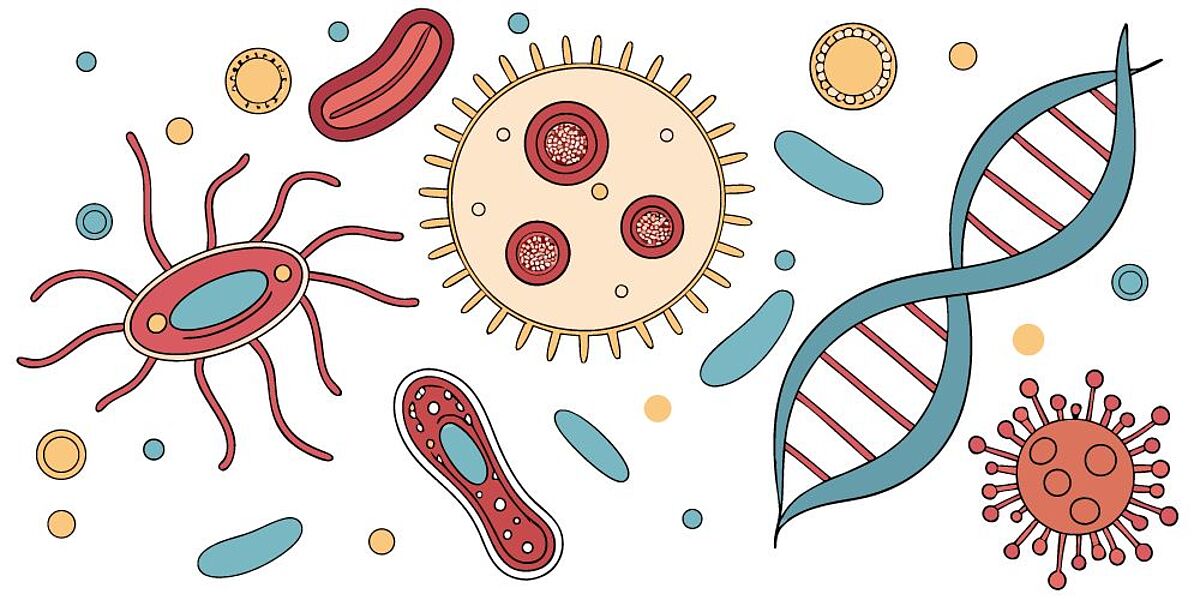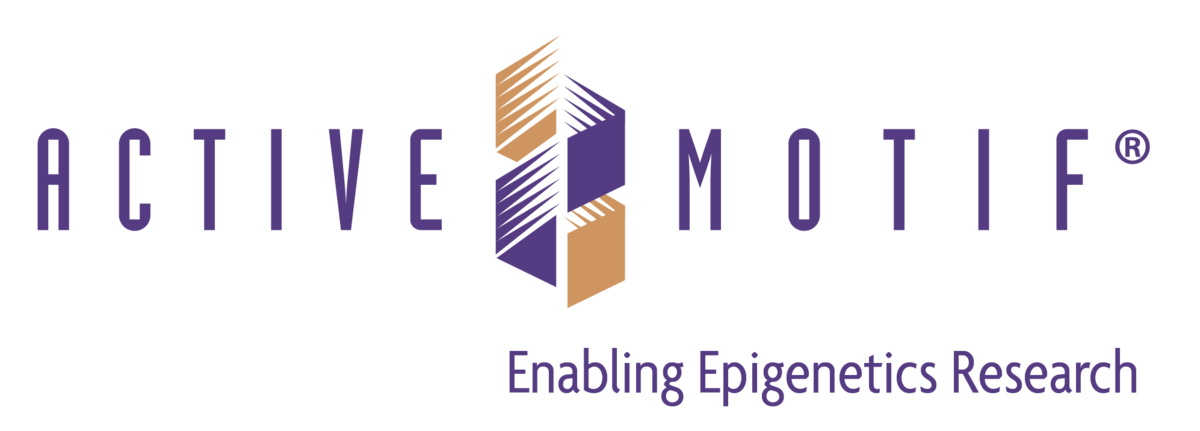Introduction: The Epigenetic Consequences of Microbial Metabolism
The microbial metabolism of dietary fiber in the gut generates large quantities of the short-chain fatty acids (SCFAs) propionate and butyrate; both SCFAs have beneficial health effects and contribute to an array of cellular processes (Koh et al. and Sanna et al.). At the epigenetic level, propionate and butyrate act as energy sources or substrates for histone acylation (Kpr and Kbu) and the modification of the chromatin landscape at gene regulatory regions by direct targeting or by indirectly recruiting remodelers (Millán-Zambrano et al.). SCFAs also inhibit histone deacetylase (HDAC) activity, with the resultant lysine acetylation (Kac) inhibiting cancer cell proliferation (Donohoe et al.). Overall, studies suggest that histone modifications mediate the interplay between epigenetics and microbial metabolism to impact health and disease.

In a new study, researchers from the laboratory of Michael P. Snyder (Stanford University) report on their exploration of the regulatory function of propionylated (H3K18pr/H4K12pr) and butyrylated (H3K18bu/H4K12bu) lysine K18 histone H3 and lysine K12 histone H4 in normal and colorectal cancer (CRC) cells and mouse intestinal tissues (Nshanian et al.). The authors focused on these sites given the link between histone acetylation at these lysines and poorer outcomes in CRC patients (Seligson et al., Ashktorab et al., and Hałasa et al.) and employed histone modification profiling by LC-MS/MS with ChIP-seq, ATAC-seq, RNA-seq, and the CUT&Tag-IT® assay kit for cells/CUT&Tag-IT® assay kit for tissues from Active Motif.
Propionate and Butyrate Treatment of Human Colorectal Cancer Cells
The treatment of CRC cells with physiological levels of propionate and butyrate prompted their conversion into cognate acyl-CoA molecules (concomitant with decreased acetyl-CoA levels) and the deposition of H3K18pr H4K12pr, H3K18bu, and H4K12bu. The study also highlighted how HAT1 (acetylates lysine K5 and K12) catalyzed the H4K12pr modification; additionally, while butyrate represents a known HDAC inhibitor, propionate did not impact histone acetylation levels.
H3K18pr analysis revealed 17,299 differentially modified sites after propionate treatment; GO analysis highlighted the enrichment of epidermal growth factor stimulus, cadherin binding, and endoplasmic reticulum unfolded protein response, while KEGG analysis highlighted an enrichment for focal adhesion, actin cytoskeleton, and cancer regulatory pathways. H4K12pr analysis revealed 27,175 differentially modified sites after propionate treatment; GO and KEGG analysis highlighted the enrichment of pathways controlling platelet-derived growth factor and cadherin binding, endoplasmic reticulum unfolded protein response, and Ca2+ channel activity. Integration of ATAC-seq, RNA-seq, and H3K18pr/H4K12pr data suggested that propionate impacted the epigenetic regulatory landscape to promote growth, differentiation, and localization over the regulation of the cell cycle and RNA processing. A similar analysis for H3K18bu and H4K12bu revealed 2,305 and 793 differentially modified sites in CRC cells, with GO enrichment, differential motif analysis, and integration with ATAC-seq results identifying pathways similar to those for the Kpr-centered analysis.
Further analyses of H3K18pr, H4K12pr, H3K18bu, and H4K12bu distribution revealed enrichment near transcription start sites, where they displayed higher density and an enhanced ability to increase chromatin accessibility compared to Kac. Functional differences between the acyl modifications linked Kac to cell cycle regulation and chromosome organization, Kpr to the regulation of cation transport, organ morphogenesis, and locomotion, and Kbu to the regulation of cell motility, migration, and locomotion, suggesting functional similarities between Kpr and Kbu but not with Kac. Analysis of shared annotated features between Kpr and Kbu and ATAC-seq/RNA-seq data revealed many of the same pathways.
A global analysis of chromatin accessibility via ATAC-seq revealed that propionate increased chromatin accessibility while butyrate induced more balanced effects on chromatin accessibility (prompting a similar degree of chromatin opening and closing). Global gene expression analysis by RNA-seq identified 2,027 upregulated and 1,151 downregulated genes following propionate treatment; genes that displayed significant upregulation represented Kpr targets and sites of increased chromatin accessibility. Upregulated genes participated in receptor signaling, development, and anatomical structure morphogenesis, while downregulated genes participated in cell cycle, cell division, and chromatin organization. Similarly, butyrate treatment upregulated the expression of genes controlling ion transport, anatomical structure morphogenesis, and cell adhesion, and downregulated genes involved in cell cycle and chromatin assembly. Overall, these data highlighted the antiproliferative properties of propionate and butyrate in CRC cells.
How Butyrate Treatment Impacts Normal and Cancer Cells and Intestinal Tissue
The analysis of butyrate treatment in CRC and normal cells highlighted 81,999 sites with higher H3K18bu levels in normal cells and 7,341 sites with higher H3K18bu levels in CRC cells. GO analysis in normal cells revealed enrichment for cell-substrate, adherens junction assembly, and ion transport and protein processing, while cancer cell data revealed enrichment for mesenchymal cell proliferation, β-catenin-TCF complex assembly, and fibroblast apoptotic processes. Similarly, 61,978 sites displayed higher H4K12bu levels in normal cells and 2,908 sites displayed higher H4K12bu levels in cancer cells. GO analysis in normal cells revealed an enrichment for adherens junction assembly and transport and the regulation of chromatin silencing and H3K9 demethylation, while GO analysis of CRC cells revealed an enrichment for mesenchymal cell proliferation, Wnt signaling, and endoplasmic reticulum stress-induced apoptotic signaling.
Finally, the team investigated links between natural dietary fiber metabolism, chromatin accessibility, and Kbu by performing ATAC-seq in mouse CRC cells and CUT&Tag on large intestine tissue. Butyrate treatment increased chromatin accessibility at 39,956 sites and decreased chromatin accessibility at 14,215 sites in mouse CRC cells, with chromatin accessibility and GO analysis displaying broad agreement with the previous cell-based analyses. Analyses of intestinal tissues revealed 21,665 H3K18bu-associated and 26,103 H4K12bu-associated sites; H3K18bu tended to associate with genes related to cell proliferation and differentiation, ion channel regulatory activity, and actin filament polymerization, while H4K12bu associated with genes related to fibroblast growth factor receptor activity and tight junction cell adhesion activity. H3K18bu GO analysis identified pathways controlling cell-substrate junction assembly, cytoskeletal organization, and autophagosome assembly, while H4K12bu GO analysis identified pathways controlling protein processing, membrane localization, and TGF-β production. Comparing ATAC-seq in mouse cells to H3K18bu targets in intestinal tissue revealed 9,221/13,867 overlapping elements and H4K12bu targets in intestinal tissue revealed 10,243/16,046 overlapping elements following butyrate treatment.
Kpr and Kbu: The Nexus Between Microbial Metabolism and Epigenetics
In summary, the authors explored the functional roles of SCFA-induced histone modifications by identifying their distribution and the biological pathways affected and demonstrating how they promote chromatin accessibility and gene expression alterations. Furthermore, these data provide insights into how microbial metabolism can modulate tissue physiology and cancer susceptibility via epigenetics and suggest that understanding more about SCFAs and related epigenetic modifications may improve human health.
For more on how SCFA-associated histone modifications form a nexus between microbial metabolism and epigenetics, see Nature Metabolism, January 2025.
Supplier

Active Motif
Active Motif offers all you need for researching epigenetics and gene regulation: from sonification devices to ChIP-Seq, CUT&Tag kits as well as validated antibodies.
